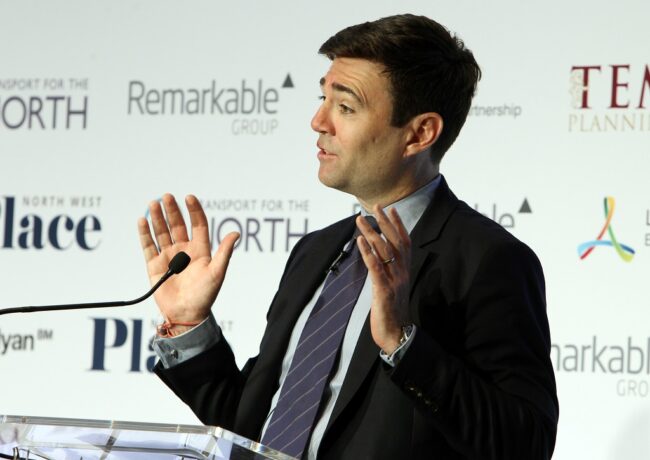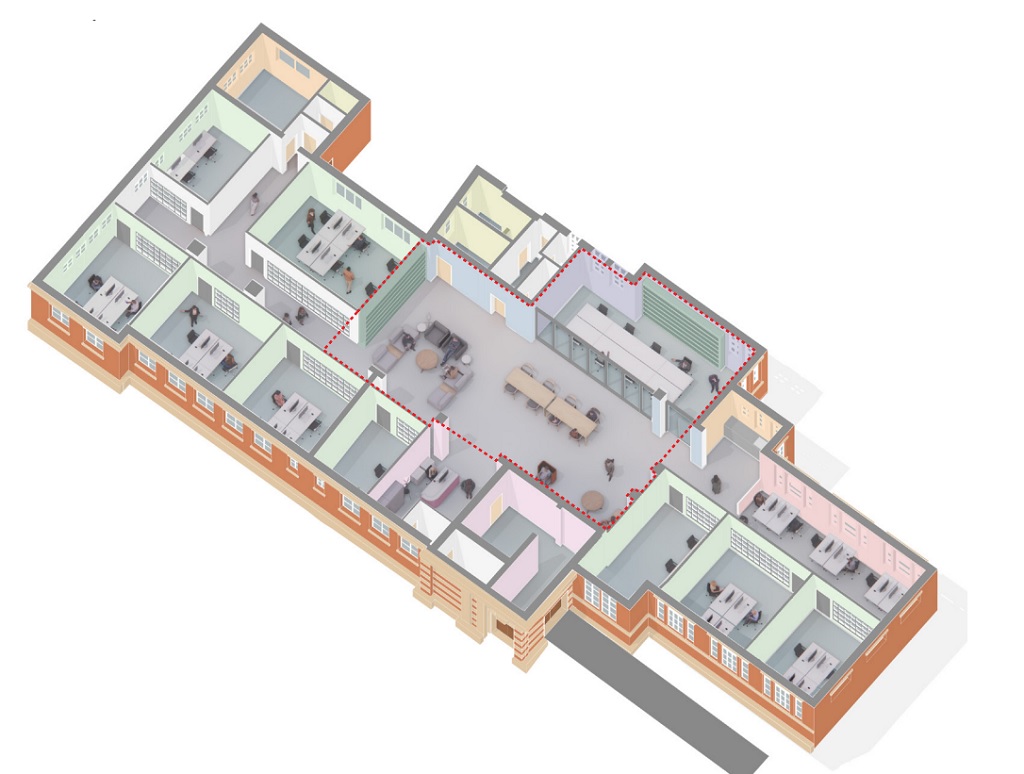Burnham moves focus to GM towns
Greater Manchester Mayor Andy Burnham is inviting all councils in the city region to nominate a town to be part of his Town Centre Challenge, launching today, as he promises to use Mayoral powers, grants, and pressure on local stakeholders to bring forward developments in “left behind” locations.
The move reflects Burnham’s attempt to deliver a “new approach to planning and development” in Greater Mancheser, moving away from what he has called the “developer-led, greenfield-first approach of the past.”
As part of the Town Centre Challenge, the Mayor said he will work with each council, to bring together housing providers, public and private landowners, developers, community groups and other key stakeholders “to unlock the potential in town centres, particularly to deliver viable housing markets and sustainable communities”.
The initiative will be supported by new Mayoral powers to establish Mayoral Development Corporations, the use of Compulsory Purchase Orders and Mayoral grants to kick-start developments. The Mayor’s office also announced that it is hoped that the projects will be supported by a new housing deal, under discussion between the Greater Manchester Combined Authority and the Government.
Burnham said: “This new initiative is all about regenerating town centres across Greater Manchester which have felt left behind. The time has come to breathe new life into our proud towns and move away from developer-led, green-field first approach of the past.
“We need to build a new future for those towns through higher density mixed and affordable housing, with local retail and leisure facilities and supported by transport and digital connectivity.
“There is a massive housing requirement across the city-region and we must have a housing and planning policy which is based on housing need and regeneration, not just the number of units. We need to build the right homes in the right places. Greater Manchester is suffering from high levels of traffic congestion and that means we will only be able to support new housing growth if we link it much more closely to transport infrastructure.
“This is part of the approach we are taking as we are re-writing the Greater Manchester Spatial Framework. But I want to make clear that this new approach will not mean that there won’t still be difficult planning decisions ahead and some green sites will still be needed.
“I am pleased to see the scale of ambition local areas have for their town centres and want the Town Centre Challenge to help accelerate change on the ground. I have made working with Greater Manchester’s councils to support improvement in our city-region’s towns a key priority of my first term as Mayor, alongside addressing the housing crisis. Every single district has a role to play and will contribute to making Greater Manchester the best place to live and get on in life.”
Work will continue between districts and the Mayor into the New Year, working together to address any issues identified in an effort to accelerate plans towards the development stage.
Greater Manchester has eight principal towns as well as around 20 smaller towns and over 50 further significant local and suburban centres.
Burnham’s focus on Greater Manchester’s towns goes alongside his decision to rewrite the Greater Manchester Spatial Framework, which was already in draft form when he took office in May this year. The GMSF is now being overhauled, with a new version expected to be put out to consultation next summer.





GREEN BELT does not need to be used, please respect future generations, I want my Granddaughter to be able to grow & live in a Healthy environment.
By Gordon Wilkinson
The towns mentioned in the Manchester Evening News in a report have been left to rot by their own councils.Prestwich has streets of half million pound houses and the centre is a mess because Bury council has taken all their money and invested it in Bury itself.It is that simple.Greater Manchester must not become Britain in miniature with Manchester city centre and Media city looking like London and the rest looking shabby and neglected through lack of investment.The old milltowns have been left to rot by Westminster.This is at least a step in the right direction.People in Fallinge and Derker are as much a part of GM as those in Salford Quays and Castlefield.I think that Andy Burnham at least understands this.
By Elephant
Spot on Elephant. Shrewd and enlightened move by Andy Burnham, the success of a bright sparkly successful central Manchester will get undone if it can’t be seen to lift the hinterland.
By Rich
Fixing the broken housing market “requires a bold move to unblock an absurd and tangled planning system”, writes Mark Littlewood, director-general of free-market think-tank the Institute of Economic Affairs, in The Times (subscription required). “Housing needs to be built in areas where people actually want to live and that requires a major relaxation of restrictions on building on greenfield sites,” according to Littlewood. He says that “measurable proportion” of the planning gain arising from releasing “huge tranches” of green belt land “could be used to generate government receipts, to ease financial pressure on council budgets or to offer financial compensation to local residents”. Littlewood concludes: “A policy to unleash a huge private building programme, to bring down the exorbitant cost of housing and to generate billions in revenue is surely too good for Philip Hammond to ignore.”
By Dave
Greenbelt absolutely needs to be used if you ever want your grandchildren to be able to afford a home to live in, let alone a healthy environment.
By QuaysMan
I agree that Green Belt needs to be looked at if family houses are to be built. Whilst I sympathise with the need to regenerate urban centres we need to attract people to live and invest in these areas, including families.
Town centres may be able to sustain apartments (if there is demand for them) but, because of the cost of cleaning up the site and the lower values people are prepared to pay to live there, it isn’t feasible to provide desirable family homes. That is the reality. I don’t want to bring up my young family in a town centre, further from schools and other suburban families. If people expect others to feel differently they’re kidding themselves.
Green Belt (certainly the agricultural land) is some of the most biologically sparse landscape in the UK. Studies have shown that housing developments are far more beneficial to wildlife because of the variety of plant species and lack of pesticides.
We need to stop presuming all Green Belt is sacrosanct. Some, of course, should always be protected but too much of it is poor quality and cut off from public use, offering nothing to wildlife either. We need a more nuanced, location-specific, debate.
By North Westerner